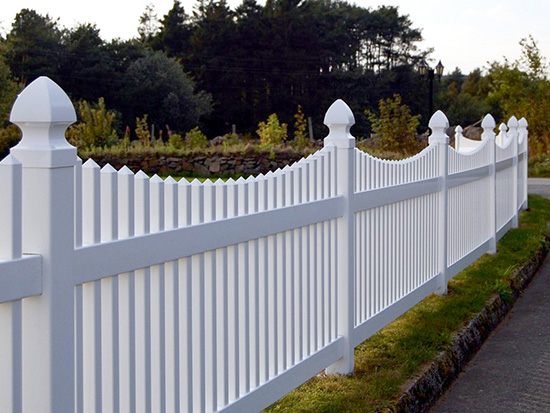We are professional China Custom Vinyl Fence Manufacturers with fences virgin PVC/Vinyl material and UV Protected.
There’s something enduring—almost poetic—about the image of a picket fence. It conjures visions of manicured lawns, ivy-covered porches, and sun-dappled weekends. But beyond its aesthetic charm, the picket fence stands as a quiet symbol of security, identity, and the pursuit of a life well-ordered.
At its core, the picket fence is more than white-painted slats. It’s an architectural expression of boundaries—not barriers. It marks the line between public and private, welcoming visitors while gently asserting, “This is mine.” Unlike imposing steel gates or fortress-like walls, the picket fence communicates openness, yet demands respect. It invites curiosity while safeguarding sanctuary.
Originating in colonial America, picket fences were first a pragmatic solution: a functional boundary to keep livestock out and children in. Over time, however, their connotation evolved. By the mid-20th century, the white picket fence became inextricably linked to the American Dream. It was no longer just a fence—it was aspiration painted in glossy enamel.
In modern design, the picket fence has evolved without losing its soul. Materials have expanded from classic wood to resilient vinyl and composite alternatives, which offer longevity with minimal upkeep. Styles now range from traditional pointed tops to scalloped contours and Gothic arches, offering homeowners a spectrum of customization while retaining the fence’s iconic rhythm of repetition.

The installation of a picket fence is as much an act of philosophy as it is of function. It is a decision to cultivate curb appeal, establish perimeter, and enhance property value in one fell swoop. Yet it does so with grace. Unlike taller fencing options that isolate, the picket fence fosters community. Neighbors chat across its slats. Children play alongside its shadow. It stands not to dominate, but to delineate—softly, unmistakably.
Maintenance, while modest, requires intent. Wood options demand periodic painting or staining to resist weather and rot. Vinyl offers ease, but lacks the tactile authenticity some purists crave. Regardless of material, the picket fence rewards stewardship with longevity and charm that deepens over time.
In an era defined by rapid change and digital detachment, the picket fence remains tactile, tangible, and timeless. It doesn’t shout for attention. It doesn’t need to. Its beauty lies in its understatement. Its power is in what it represents—a life curated with care, a space defined with pride, a threshold between chaos and calm.
To build a picket fence is to participate in a tradition that spans centuries. It’s a nod to heritage, a design choice rooted in civility, and a practical feature steeped in symbolism. Whether framing a garden path or lining a suburban front yard, the picket fence continues to hold its place—not just in architecture, but in our collective imagination.
 English
English  中文简体
中文简体
























